

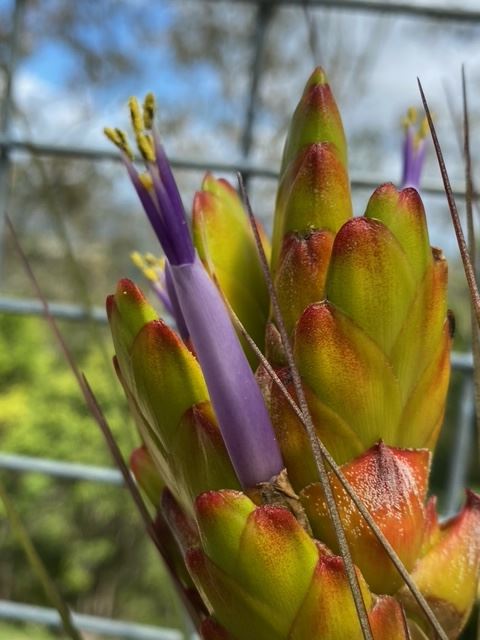
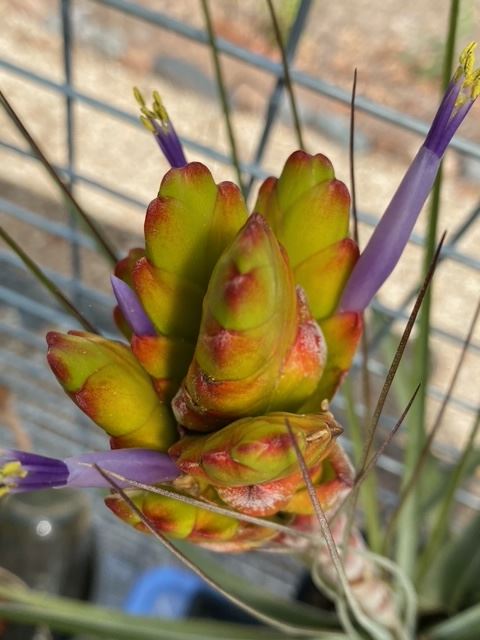

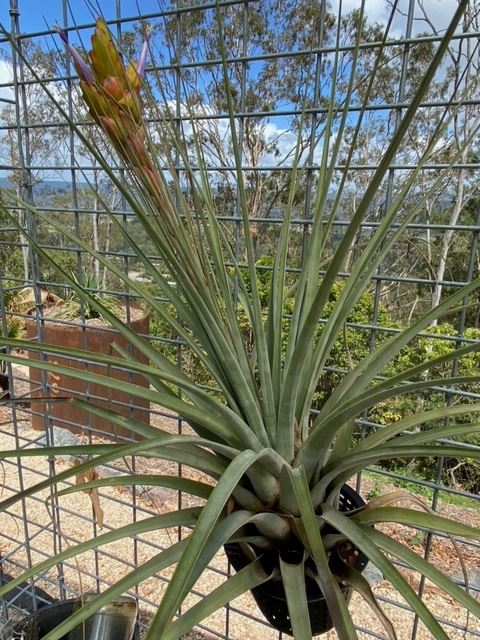

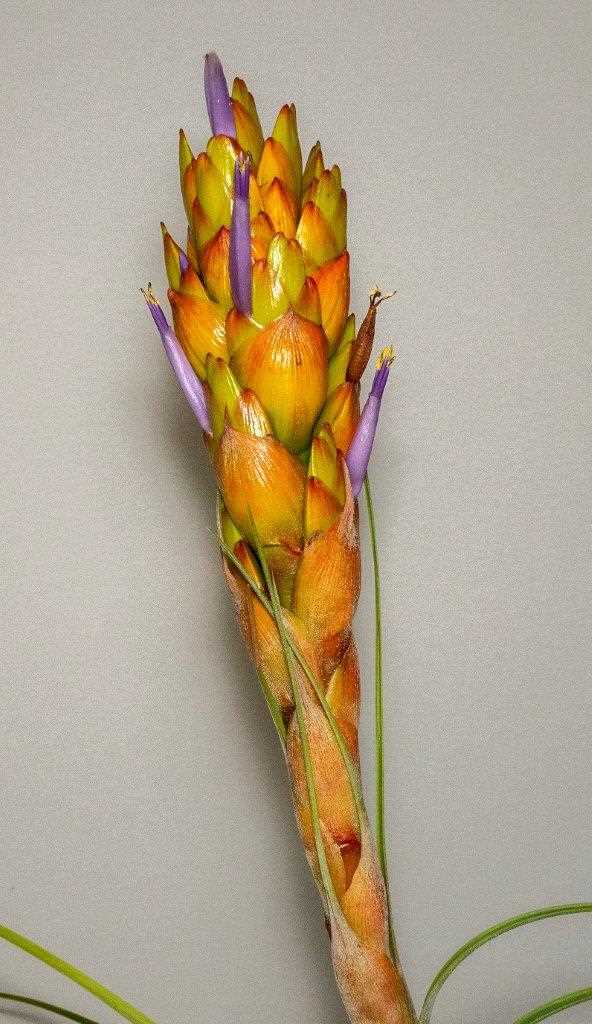
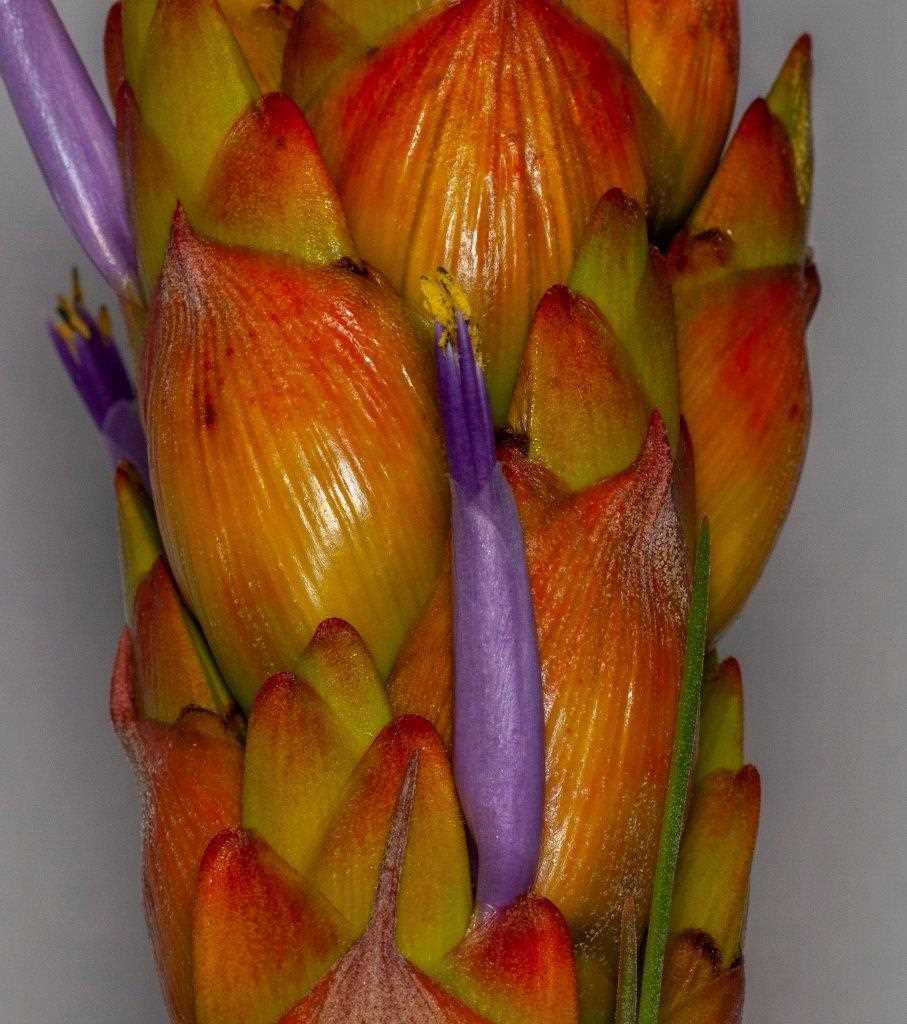
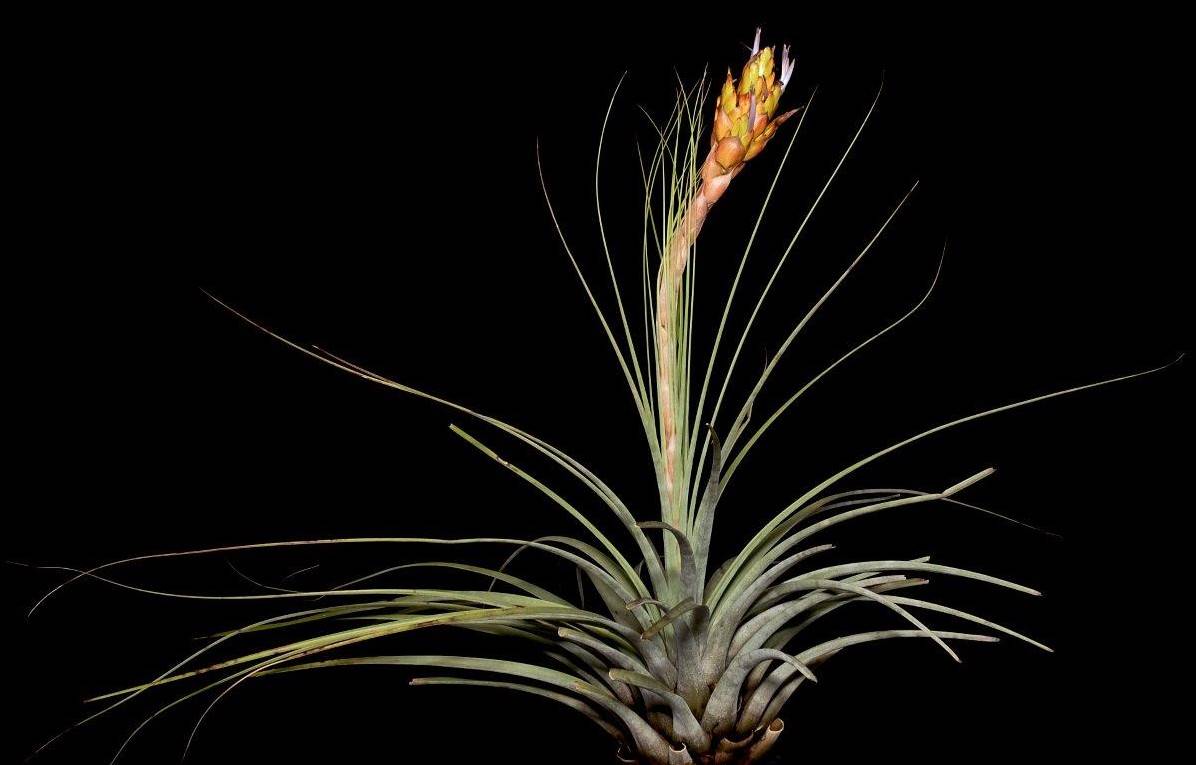

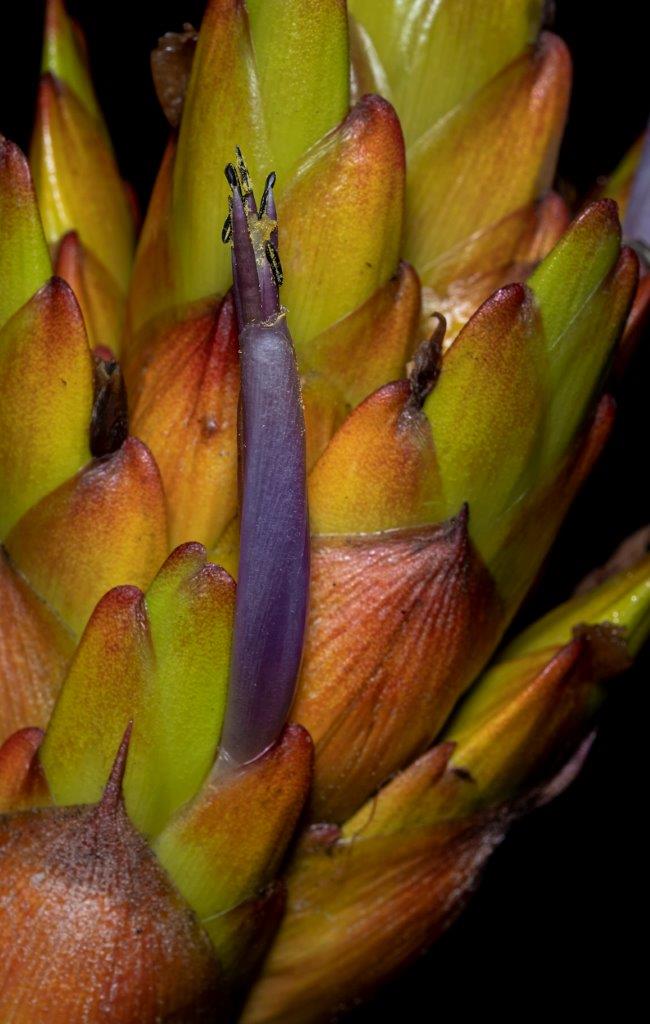
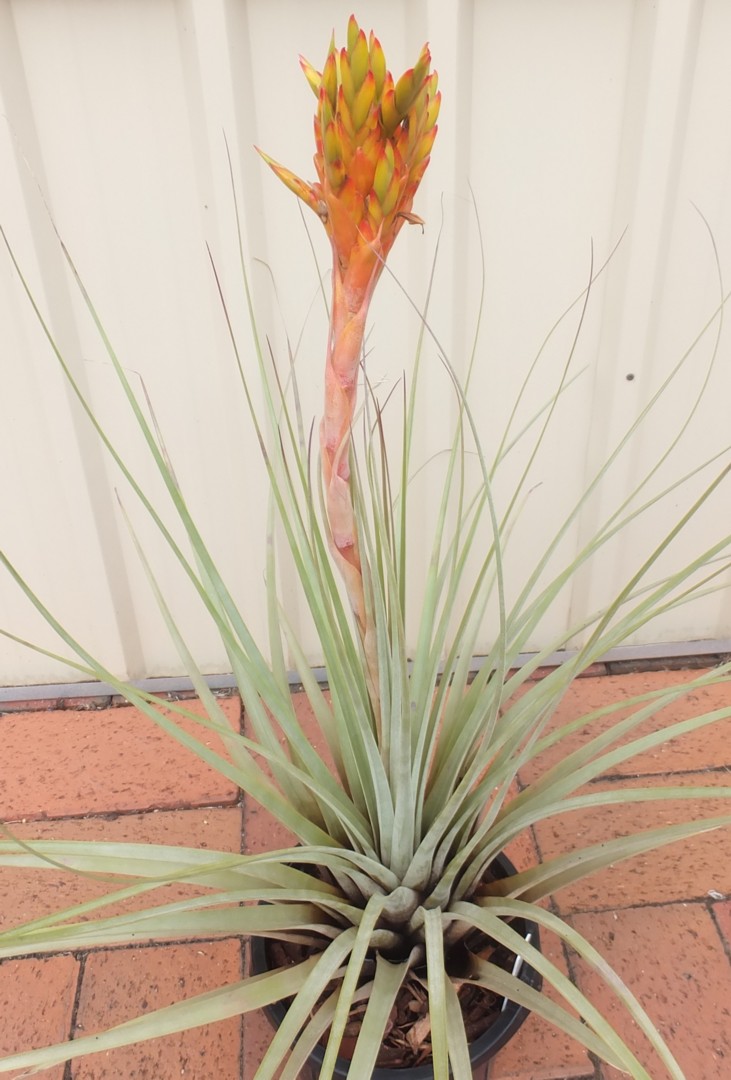
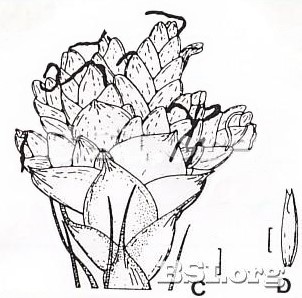
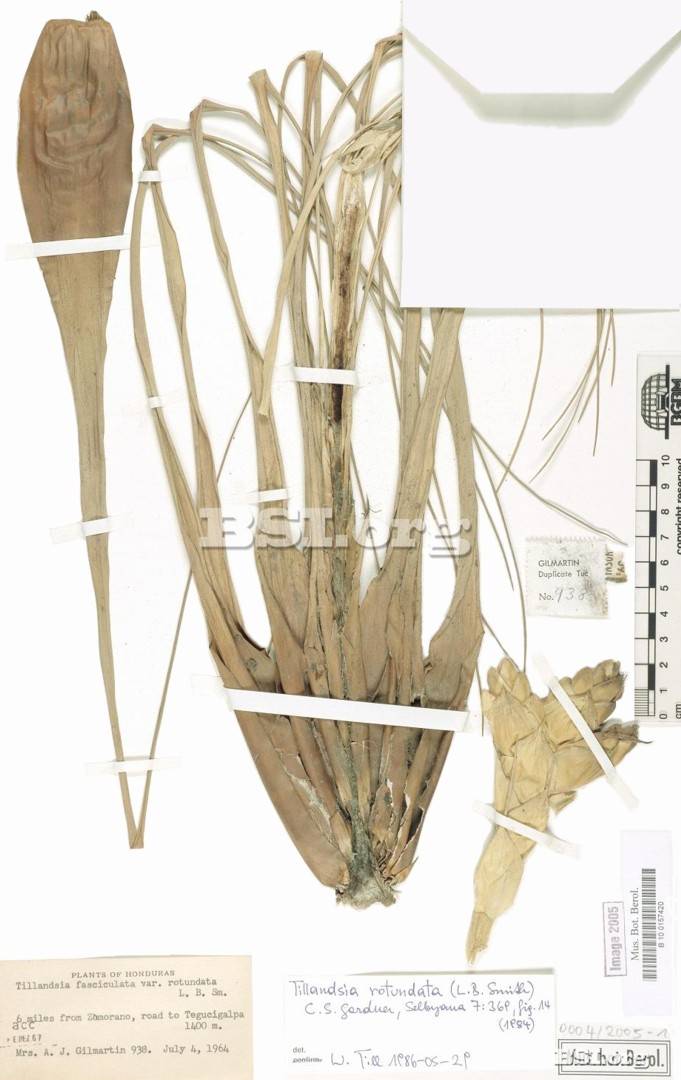
Basionym: Tillandsia fasciculata Swartz var. rotundata L.B Smith, Contr. Gray Herbarium 154: 36, pl. 4, figs. 6,7,1945.
Type: GUATEMALA: HUEHUETENANGO: Carrizal, 1942, Steyermark 50809 (Holotype: F).
Additional material examined: MEXICO: CHIAPAS: Las Casas, 1957, Foster & VanHyning 2952 (US); AGUACATENANGO, Venustiano Carranza, 1965, Raven & Breedlove 20095 (DS, US); Comitan de Dominguez, 1965, Breedlove 9831 (DS, US); Rincon Chamula, 1981, Gardner 1410 (SEL); Campo Santiago, S of San Cristobal de las Casas, 1981, Gardner 1419 (SEL); Gardner 1086 (SEL,US). GUATEMALA: MORAZON: Rio Yeguare, ca.14deg N, 87deg W, 1949, Williams 15997 (EAP, F, US). HONDURAS: Morazan, 1964, Gilmartin 938 (US); Gilmartin 981a (US).
Distribution: Chiapas, Mexico, Guatemala, and Honduras.
Several characteristics distinguish this species from T. fasciculata Swartz.
Inflorescence is a globose head of densely digitate spikes or branches that are nearly as broad as they are long. The branches of T. fasciculata var. fasciculata are distinctly lanceolate, and more than three times longer than broad.
Branches of T. rotundata are subtended by sub-orbicular primary bracts.
Floral bracts are cucullate, slightly inflated, and nearly as broad as they are long, whereas the width of the floral bracts of several specimens of T. fasciculata is approximately one-half the length.
The abaxial surfaces of the floral bracts are slick and polished as if lacquered deep red. The surfaces of the floral bracts of T. fasciculata are smooth but not polished.
Habitat of T. rotundata is typically at higher elevations than T. fasciculata although there is some overlap.
Tillandsia rotundata is reported at between 1400 and 2500 meters, and all varieties of T. fasciculata (except var rotundata) occur between sea level and 1880 meters (Smith & Downs, 1977).
Tillandsia rotundata typically occurs in pine and oak forests.
Detail from L.B Smith, Contr. Gray Herbarium 154: 36, pl. 4, figs. 6,7, 1945.
Tillandsia fasciculata Sw. var. rotundata, var. nov., inflorescentia globosa; bracteis primariis suborbicularibus, apiculatis; spicis ovatis, complanatis, 4-6 cm. longis; bracteis florigeris cucullatis, ex sicco plus minusve rugosis. Tab. IV, fig. 6, 7:
GUATEMALA: Zacapa: San Lorenzo, alt. 1600 m., Jan. 24; 1942, Steyer¬mark .43158 (G, CM); HUEHUETENANGO: Carrizal, Aug. 17, 1942, Steyermark 50809 (CM, TYPE; phot. G).
HONDURAS: COMAYAGUA: epiphytic in forest near El Achote, above the plains of Siguatepeque, alt. 1350 m., July 15, 1936, Yuncker, Dawson & Youse 5897 (CM).
This variety is easily distinguished by its very short broad primary bracts and spikes.